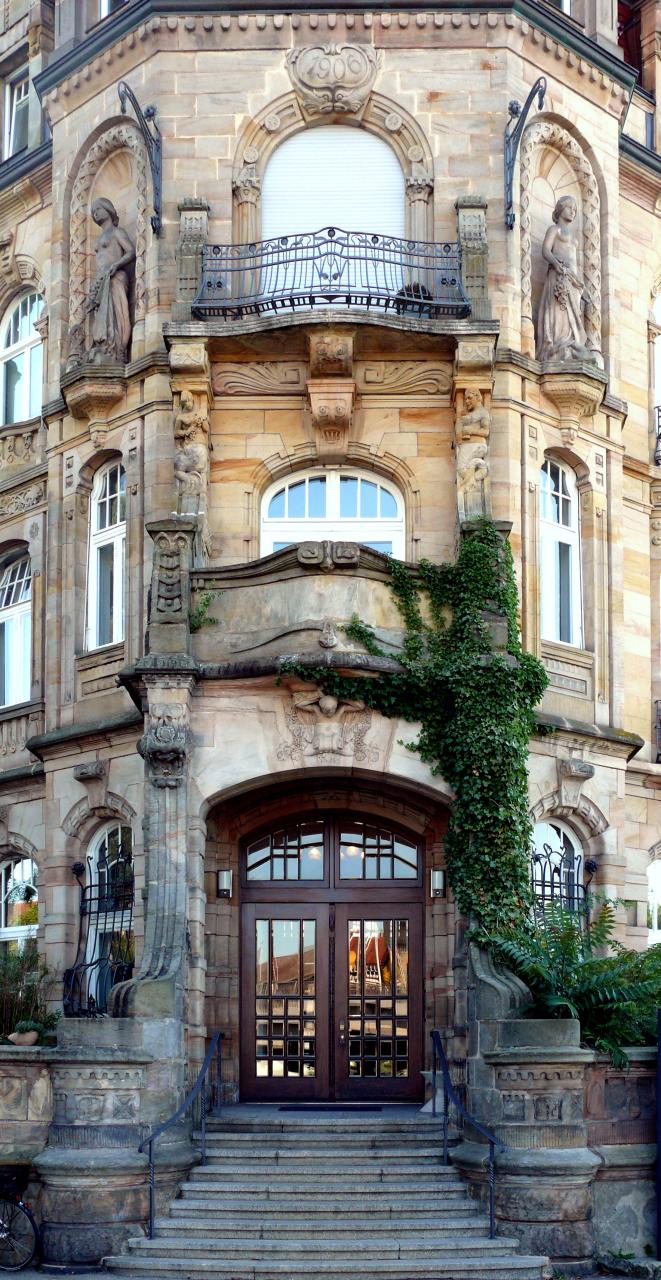#4867. Art Nouveau Corner Facade: Sculptural Plasticity and Organic Forms
The image showcases a magnificent example of Art Nouveau (Jugendstil) architecture, likely from the late 19th or early 20th century, as evidenced by the number "900" on the building's pediment. This is a corner facade of an urban mansion or apartment building, constructed from light-colored sandstone.
The facade features rich decorative elements with the flowing, organic lines characteristic of Art Nouveau. The corner section of the building is accentuated and has a rounded form. The entrance is designed with an arched portal featuring wooden doors with glazing, accessed by a grand staircase with massive balustrades.
Particularly noteworthy are the sculptural elements: female caryatid figures and mascarons on the second and third floors, harmoniously integrated into the architectural composition. The second-floor balcony is adorned with an elegant wrought iron railing featuring botanical motifs. The facade also demonstrates a play of various textures and volumes, creating rich light and shadow effects.
The building gains picturesqueness from ivy partially covering the right side of the facade. Windows of various shapes and sizes - arched, rectangular, with stained glass - emphasize the asymmetry and unique character of the building, which is a hallmark of Art Nouveau architecture that rejected classical symmetry.
